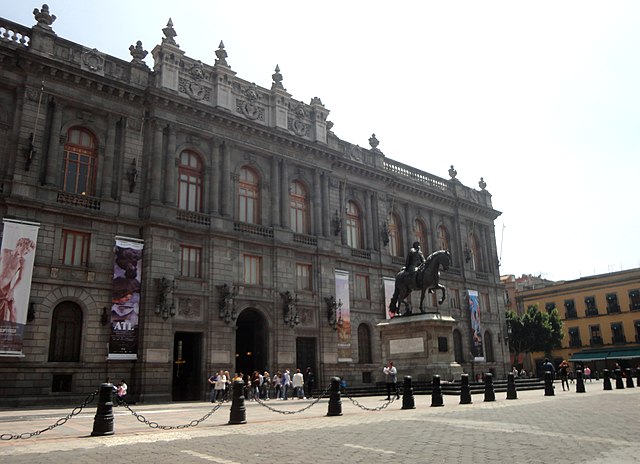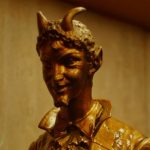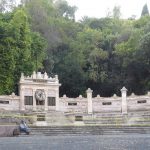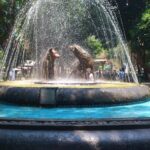
__
Mexico’s National Art Museum, the Museo Nacional de Arte (MUNAL) is housed, in the city center, in a stunning neoclassical building. With a very worthy collection to back up Mexico’s place in the history of art, works are concentrated from the mid-16th century to the mid-20th century.
With Tolsá’s enormous equestrian statue of Charles IV of Spain out front, (the plaza is named for Tolsá, too), it’s one of the most visited museums in the city. Temporary exhibitions cover themes in the history of Mexican art as well as many strong temporary exhibits traveling from abroad.
Founded in 1982, the museum focuses on exhibition, study, and diffusion of Mexican and international art. A permanent collection contains more than 3,000 works and the building has some 5,500 square meters of exhibition space. A subdivision of the Instituto Nacional de Bellas Artes y Literatura (INBAL), the MUNAL is likewise involved in the conservation, exhibition, and study of the fine arts of Mexico.
The collection is subdivided into three distinct periods. A first covers the colonial period from 1550 to 1821. The second covers the first century after Mexican Independence and, a third covers the period after the Mexican Revolution through the 1950s. In general, artworks from after these periods are more likely to be created and displayed at a number of other museums affiliated with the INBAL.
Originally, for the Palace of Communications building, Italian architect Silvio Contri was contracted to design and build a “palace” for the Secretariat of Communications and Public Works. It was begun in 1904 and completed in 1911.
Always intended to show off a national commitment to modernization, the palace design included mixed elements from multiple older architectural styles, which is characteristic of the time period (see the Postal Palace for another strong example). Decorative elements in the building were completed in Florence, as were the door knockers, window frames, the leaded crystal, some stonework, furniture, lamps and ironwork.
A Reception Hall on the second floor was the preferred location for President Porfirio Díaz’s later public declarations and for receiving foreign dignitaries. The building served for sometime after as the National Archive, and was converted into the National Art Museum only in 1982.
 +52 (55) 8647 5430
+52 (55) 8647 5430
 http://www.munal.mx/munal/
http://www.munal.mx/munal/

0.05 kms.

0.07 kms.

Mercado La Paz is one of the oldest continually operating public market places in the city, great place for lunch!

Bellas Artes has long been an iconic symbol of Mexico City's culture, artistry, and the performance arts.

A quiet sun-dappled hemicycle in Chapultepec remembers the fallen in battles near and far.

Always open, the Jardín Centenario is the park at the very heart of one of the City's favorite neighborhoods.